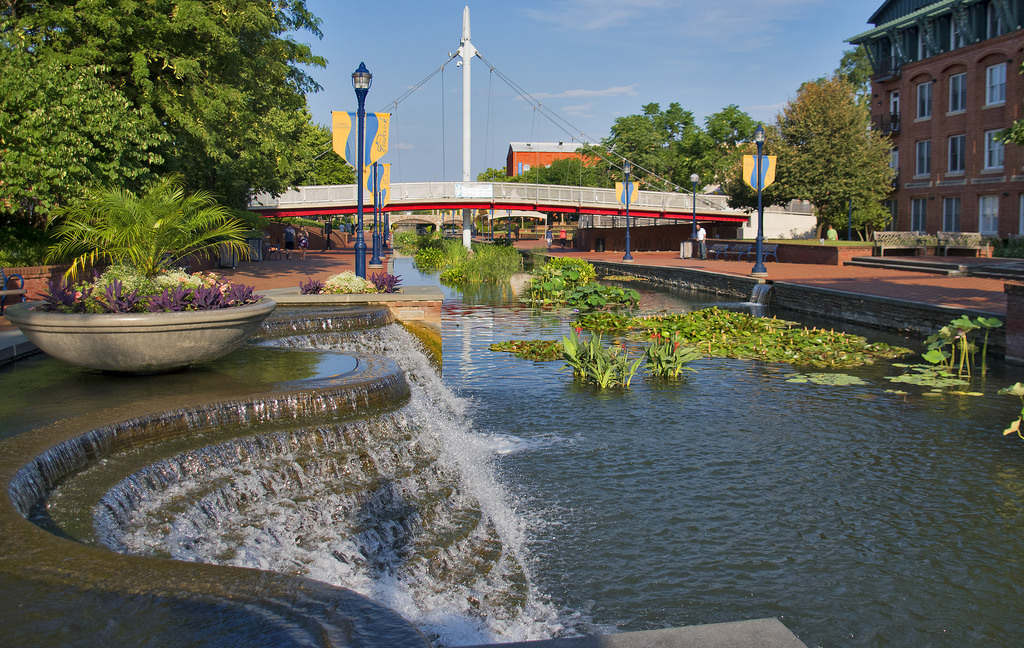 Site Location
Site Location
Carroll Creek Park & Downtown Frederick
Court Street through East Patrick Street
Frederick, MD 21701
Timeline
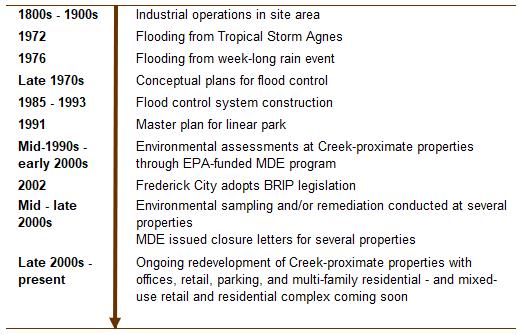
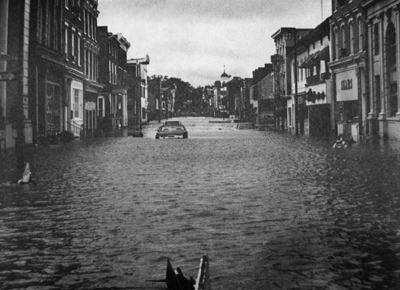 Site Environmental History
Site Environmental History
The site is located along a 1.3-mile stretch of Carroll Creek in the City of Frederick’s downtown district. The Creek is a tributary of the Monocacy River, which drains to the Potomac River. The creek flooded and caused extensive damage to the downtown district in both 1972 and 1976, which spurred studies, a Master Plan and Implementation Strategy, the Carroll Creek flood control project, modification of Carroll Creek Park to serve as the roof of the flood control conduits, channelization of the stream, and ultimately, redevelopment of the downtown Carroll Creek watershed area that was previously underutilized due to floodplain constraints to enhance the park.
Several types of industrial/hazardous substance operations including: limestone quarry; unregulated disposal facility; recycling for building materials (including limited quantities of paints and stains); gas station; auto body shops; manufactured gas plant; cannery; cabinet manufacturing; spoke manufacturing; railroad repairs; coal storage; and stockyard were conducted as early as the 1800s in the areas adjacent/proximate to the creek. Contaminants present in hazardous substances were likely used at the properties due to these historical operations and would have included: petroleum from gasoline and heating oil; volatile organic compounds (VOCs)and semi-volatile organic compounds (SVOCs) from coal tar and paints/stains; lead from gasoline; and other metals from autobody shop, railroad, and manufacturing operations.
Site Features
Acreage |
 |
1.3-mile stretch of creek with approximately 60+ acres of redeveloped, adjacent/proximate land |
| Landscape & Geology |
 |
Riverine wetlands, palustrine wetlands, 500-year floodplain, Piedmont Plateau Province, local protected lands |
| Zoning |
 |
Commercial (majority of site area), Institutional, Industrial, Agriculture (Carroll Creek Park area) |
| Incentive Areas |
 |
Main Street Area, Arts and Entertainment District, BRAC Zone, Sustainable Communities, Heritage Area, Metropolitan Planning Organization Area, Opportunity Zone
|
Remediation
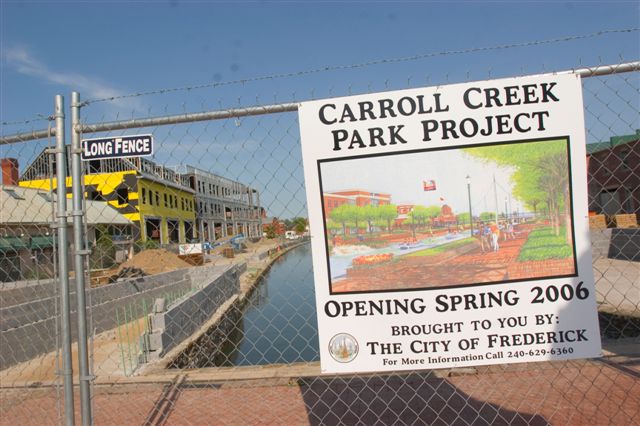 Environmental assessments were conducted at several of the adjacent/proximate properties between the mid-1990s and early 2000s. Contaminated soil and groundwater was identified at several properties. Various types of contaminants were detected in the area. Several of the properties enrolled in the Maryland Department of the Environment’s (MDE) Voluntary Cleanup Program (VCP) during these environmental assessment and investigation activities; however, several properties withdrew from the VCP. Several other properties completed Response Action Plans for remediation, which were approved by MDE, who subsequently issued closure letters for these properties (deeming the properties safe for occupation/use), with stipulations for land use restrictions and required engineering controls based on the level and type of contamination remaining on-site after the cleanup.
Environmental assessments were conducted at several of the adjacent/proximate properties between the mid-1990s and early 2000s. Contaminated soil and groundwater was identified at several properties. Various types of contaminants were detected in the area. Several of the properties enrolled in the Maryland Department of the Environment’s (MDE) Voluntary Cleanup Program (VCP) during these environmental assessment and investigation activities; however, several properties withdrew from the VCP. Several other properties completed Response Action Plans for remediation, which were approved by MDE, who subsequently issued closure letters for these properties (deeming the properties safe for occupation/use), with stipulations for land use restrictions and required engineering controls based on the level and type of contamination remaining on-site after the cleanup.
 Financing
Financing
The flood control project was financed through a cost sharing agreement between the City of Frederick (34%), Frederick County (21%), and the State of Maryland (45%). The United States Environmental Protection Agency (EPA) provided funding to MDE between the mid-1990s and 2008 to conduct brownfield site assessments. Several properties described above were initially assessed by MDE under this federally-funded program. The City of Frederick and Frederick County both enacted Brownfield Revitalization Incentive Program (BRIP) legislation to allow brownfield properties in their jurisdictions to be eligible for tax incentives. The City was awarded a $3 million grant from the Maryland Transportation Enhancement Program (TEP) to assist with Carroll Creek Park construction costs. In addition, funding sources for the flood control project included Community Development Block Grant funds, Army Corps of Engineers funds, Maryland Department of Natural Resources Program Open Space funds, local funding, and flood control funding.
The total flood control project cost was estimated to be about $60 million. The Carroll Creek Park project cost is estimated between $10.2 and $20 million.
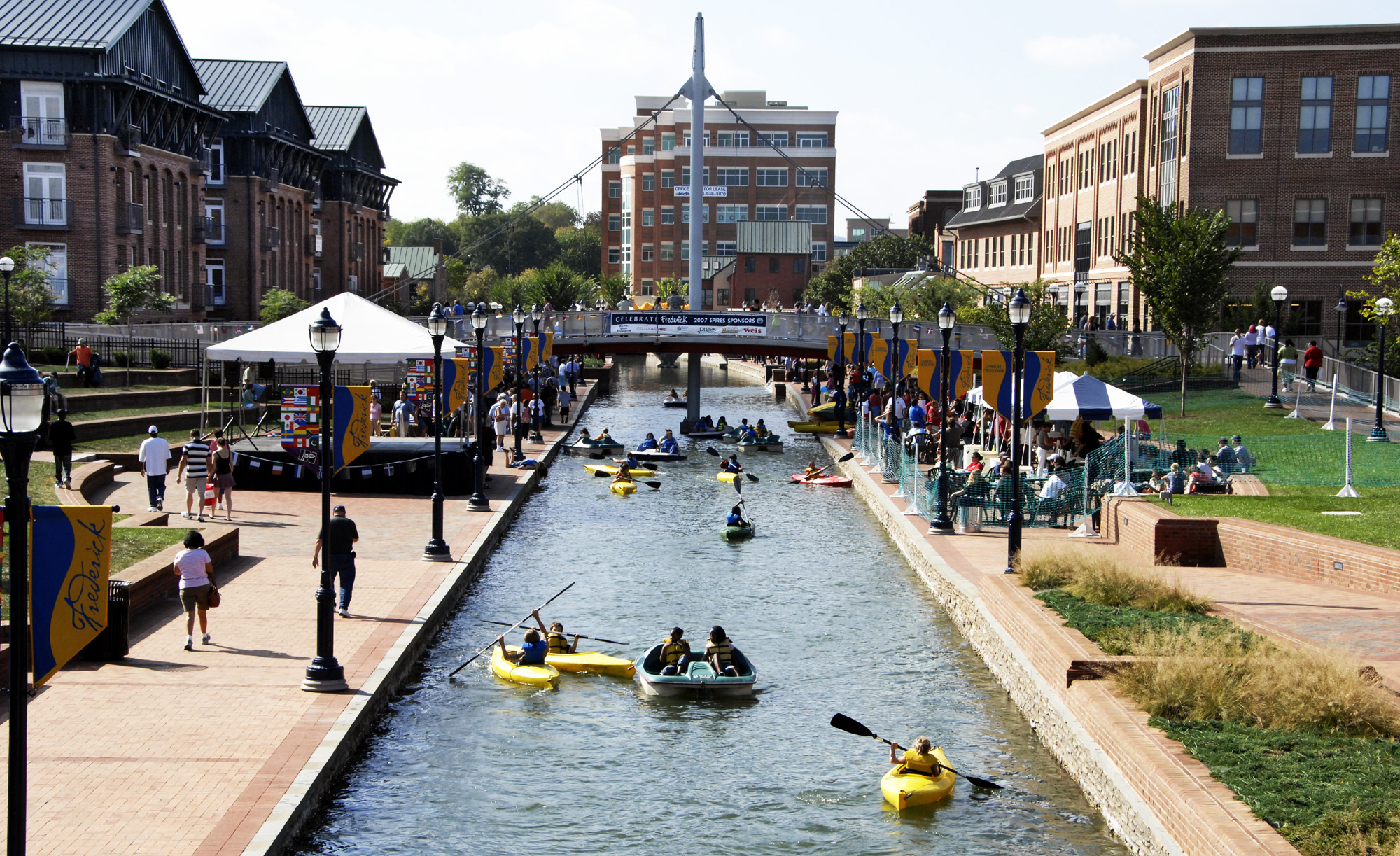 Redevelopment
Redevelopment
The creek and creekside now serve as the connection between Carroll Street Park and the downtown district and engage the public’s use with a pedestrian and bike path, bridges, brick-paved pathways, fountains, sculptures, planters, and landscaping.
The creek flood control project, including development of Carroll Creek Park, and planning efforts removed 134 land acres and 400+ buildings from the flood plain, spurred large-scale investment and redevelopment in Frederick’s downtown to transform the once industrial and flood prone area into a service/retail/office/residential use area and tourist attraction. The area now includes office space, retail space, parking decks, multi-family residential units, new jobs, and hundreds of millions of dollars in private investment. In addition, the State of Maryland extended commuter rail service into the downtown area adjacent to Carroll Creek. Additional development is on the way to the creekside, including a mixed-use retail and residential complex.
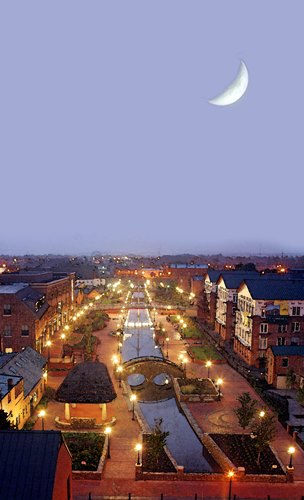 Community Benefits
Community Benefits
- The disastrous flooding of Carroll Creek into the downtown district in the 1970s prompted planning efforts that utilized public involvement and consensus building to solicit community preferences for Carroll Creek Park and the surrounding area (1991 Carroll Creek Park Master Plan). The redevelopment plan reflects the residents’ vision for their community.
- Flood control protects the surrounding downtown area from further environmental impacts that may have otherwise been caused by industrial storm water infiltration.
- Alleviation of major downtown flooding issues through flood control measures, and assessment/remediation of environmental contamination transformed this previously underutilized prime planning area into a vital, mixed-use, tourist-attraction downtown “where hip meets historic”.
- Environmental cleanup improves the health and well-being of wildlife, environmental media, and people in the area.
- Renovation and utilization of vacant, historical buildings/property revitalizes the neighborhood and community, removes blight, and reduces crime.
- Operation of low environmentally hazardous service, retail, office space, and residential facilities in commercially/industrially-zoned, former industrial/manufacturing/auto-oriented spaces preserves and protects the environment against further contamination.
Sources
Information for this success story was gathered from the following sources: Maryland Department of the Environment Land Restoration Program’s web-based mapping application and fact sheets, Wikipedia, City of Frederick website, Visit Frederick website, The Frederick News-Post website, and Frederick Real Estate Online website.